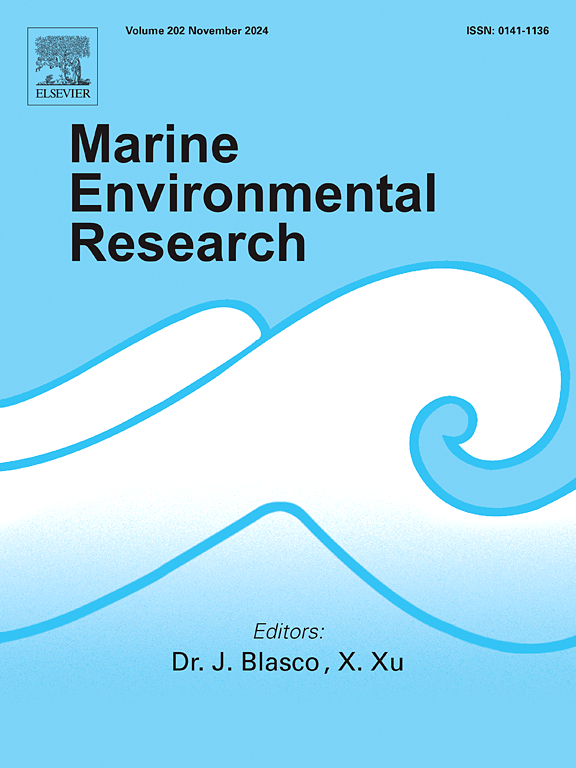Spatiotemporal distribution and potential ecological risks of current-use pesticides (CUPs) in Laizhou Bay, China
IF 3
3区 环境科学与生态学
Q2 ENVIRONMENTAL SCIENCES
引用次数: 0
Abstract
Pesticides occur widely in coastal waters and potentially pose a risk to marine ecosystems and human health. The spatiotemporal distribution of current-use pesticides (CUPs) was studied in Laizhou Bay (LZB) and the Xiaoqing River watershed in China during the summer of 2022 and spring of 2023. The pesticide composite index (PCI) and persistence index (PI) were established in association with the risk quotient (RQ) to assess the ecological risk in LZB. In this study, 17 and 12 kinds of CUP were detected in rivers and LZB seawater, respectively, with atrazine and neonicotinoid insecticides (NEOs) being the most frequently detected CUPs at higher concentrations. The average concentration of CUPs decreased from rivers to the coast and towards the center of the LZB, with higher levels in spring and lower levels in summer in rivers and a reversed pattern in seawater. The high-risk areas lie in the LZB coastal area and the estuary. Atrazine, chlorpyrifos, and imidacloprid might pose a high risk to aquatic organisms based on the RQ in the LZB, whereas the priority concern pesticides are atrazine and triazophos based on the PCI and PI. This study is of great significance for assessing the composite ecological risk of CUPs in aquatic environments.

求助全文
约1分钟内获得全文
求助全文
来源期刊

Marine environmental research
环境科学-毒理学
CiteScore
5.90
自引率
3.00%
发文量
217
审稿时长
46 days
期刊介绍:
Marine Environmental Research publishes original research papers on chemical, physical, and biological interactions in the oceans and coastal waters. The journal serves as a forum for new information on biology, chemistry, and toxicology and syntheses that advance understanding of marine environmental processes.
Submission of multidisciplinary studies is encouraged. Studies that utilize experimental approaches to clarify the roles of anthropogenic and natural causes of changes in marine ecosystems are especially welcome, as are those studies that represent new developments of a theoretical or conceptual aspect of marine science. All papers published in this journal are reviewed by qualified peers prior to acceptance and publication. Examples of topics considered to be appropriate for the journal include, but are not limited to, the following:
– The extent, persistence, and consequences of change and the recovery from such change in natural marine systems
– The biochemical, physiological, and ecological consequences of contaminants to marine organisms and ecosystems
– The biogeochemistry of naturally occurring and anthropogenic substances
– Models that describe and predict the above processes
– Monitoring studies, to the extent that their results provide new information on functional processes
– Methodological papers describing improved quantitative techniques for the marine sciences.
 求助内容:
求助内容: 应助结果提醒方式:
应助结果提醒方式:


